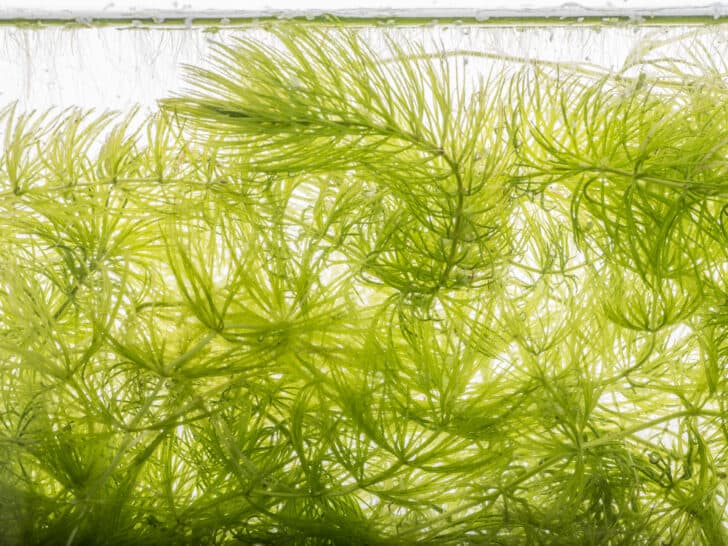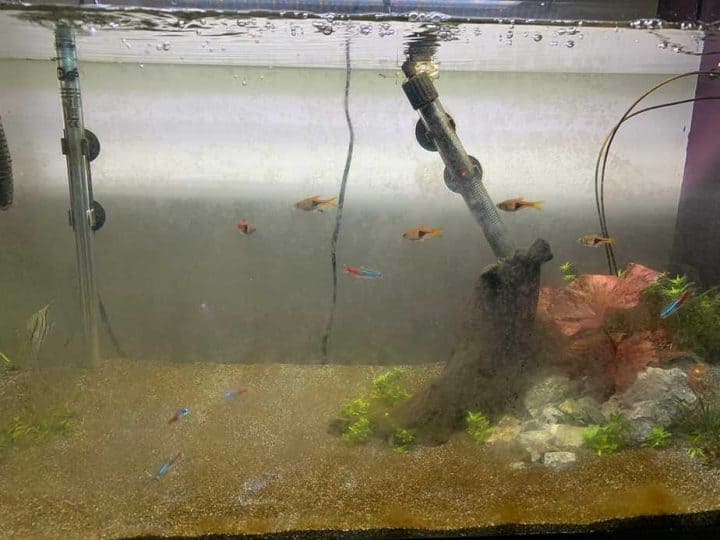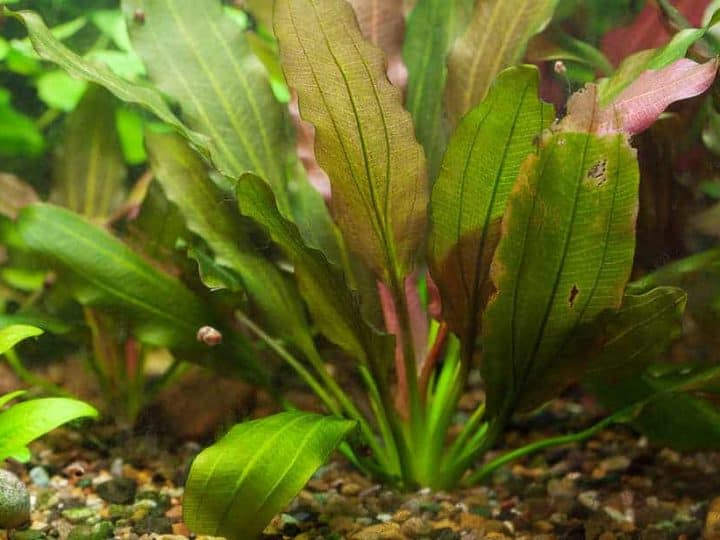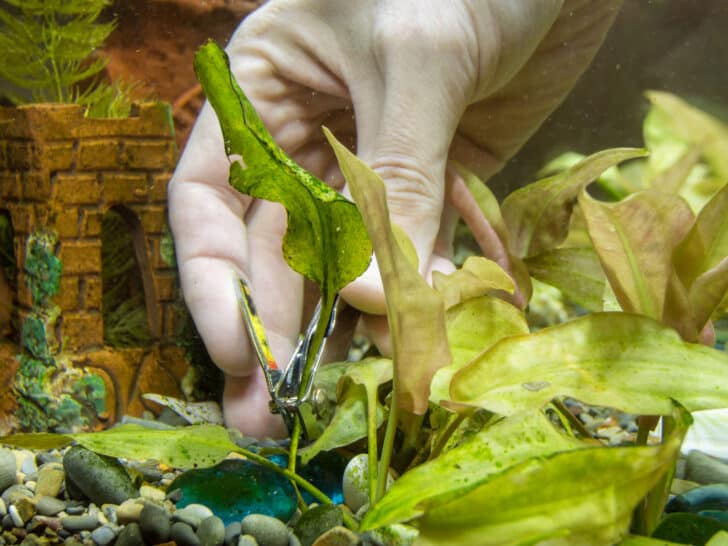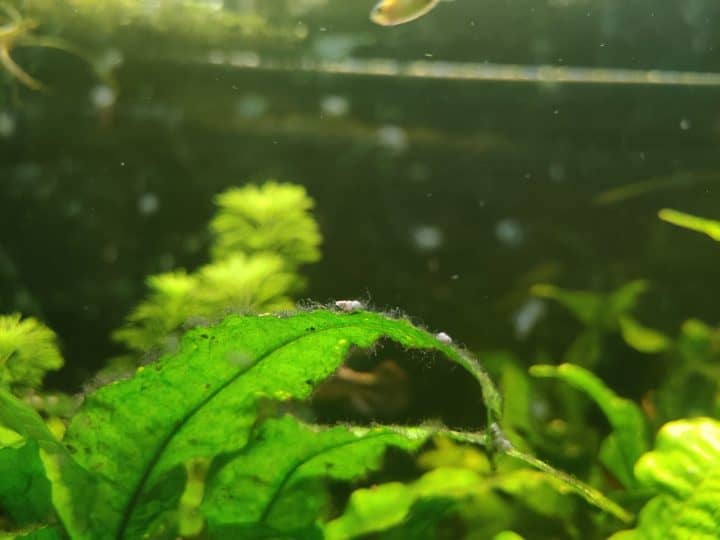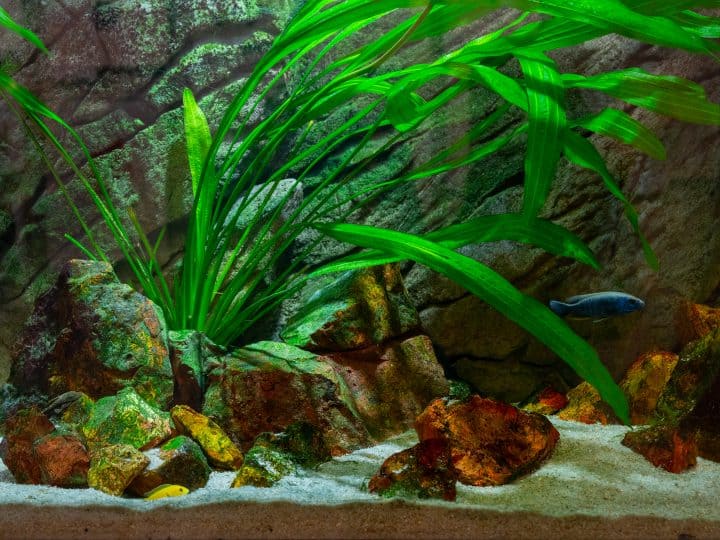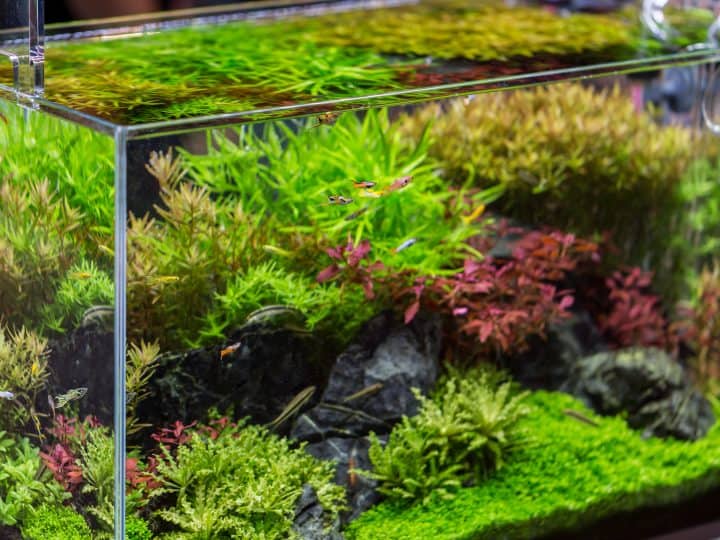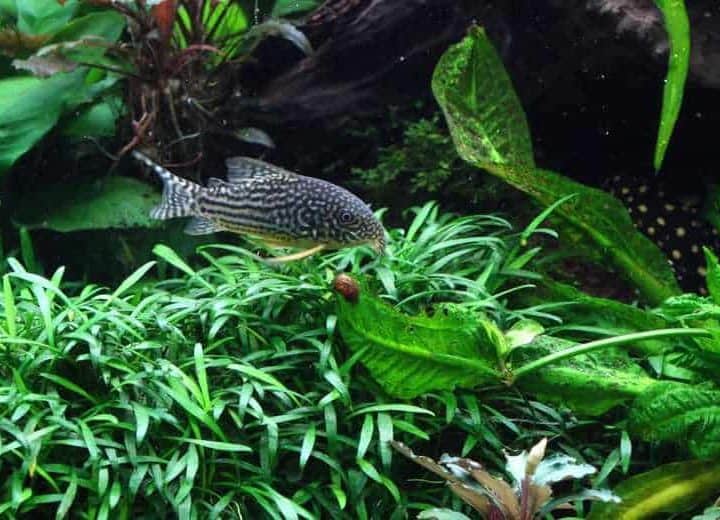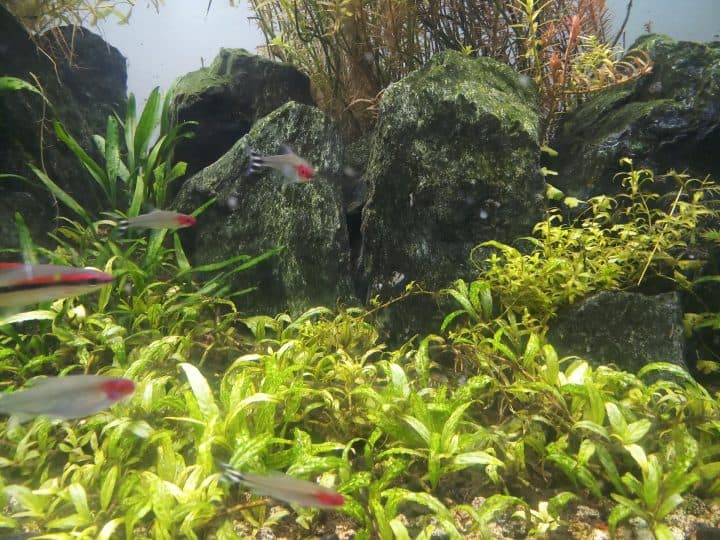Having an aquarium is a great way to make your home more relaxing and appealing. Along with taking care of your fish are the various plants that add aesthetics to your fish tank. There are many reasons why your aquarium plants have holes, but also some easy fixes.
Quick Answer
Your aquarium plants may develop holes due to potassium deficiency. If your plants are starting to have holes, you need to regularly change the water in your tank and keep the macronutrients balanced. The damaged plant would heal itself as long as the roots are healthy and the tank is maintained.
Continue reading as I discuss further the reason behind the holes in your aquatic plants, along with the importance of maintaining balanced macronutrient levels. In addition, I’ll also explain various ways to fix holes in your aquarium plants.
What Causes Holes in Your Aquarium Plants?
The lack of potassium can cause holes in your aquarium plants. The holes result from macronutrient deficiency, a condition in which a plant lacks the main nutrients, including nitrogen, phosphorus, and potassium. Some fish may eat aquatic plants, too, hence the holes.
To grow healthily, your aquarium plants mustn’t lack the essential nutrients needed to support their growth. Therefore, keep your plants’ nutrient levels in check from time to time.
Potassium Deficiency Can Create Holes in Aquarium Plants
If the plants in your fish tank lack potassium, you may notice your plants developing small black dots on their leaves. If not treated, these small dots could grow and become holes with yellow or black outlines. These holes would continue to grow until the plant is totally disintegrated.
The Importance of Potassium in Aquarium Plants
In general, potassium is an essential macronutrient for plants. Aquatic plants usually take up large quantities of potassium to aid in their growth and keep them healthy.
Potassium plays an important role in the movement of water and nutrients in your plants’ tissue. That’s why a lack of potassium could cause problems in delivering nutrients to different parts of your plant.
In addition, potassium also acts as an activator for roughly 60 enzymes responsible for protein production and more. That’s why keeping a stable amount of potassium in your aquarium water is vital to keep your plants healthy.
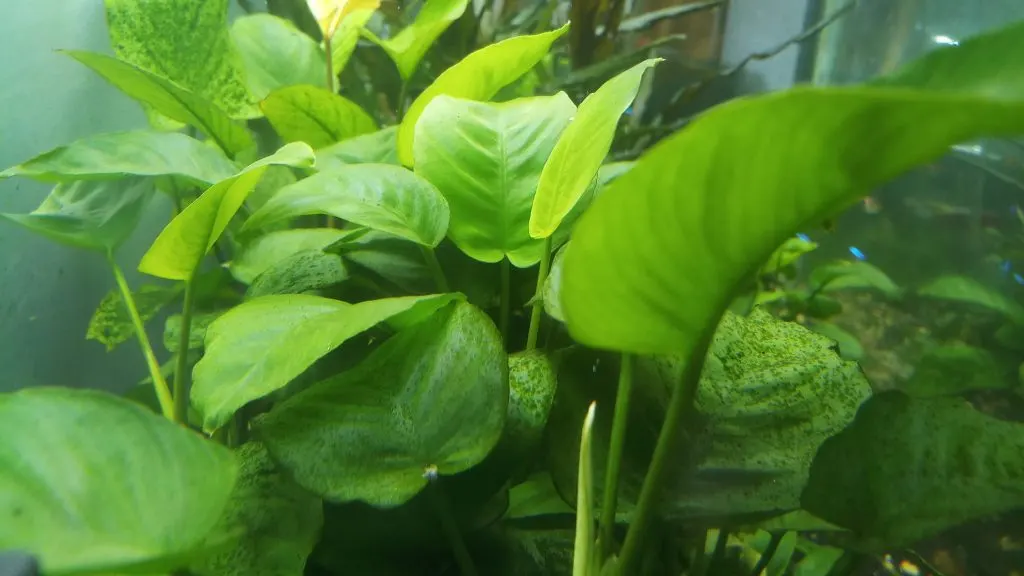
Plant-Eating Fish Can Cause Holes on Plant Leaves
Potassium deficiency isn’t the only reason behind the holes in your plants. Various fish species are also known for their plant-eating habits, leading to small holes in your aquarium plants’ leaves. Here are some of the fish known for eating plants:
- Goldfish
- Mbuna
- Oscars
- Uaru spp.
- Leporinus spp.
- The Common Pleco
- Silver Dollars
- Buenos Aires Tetras
- Scats & Monos
How To Fix Holes in Aquarium Plants
If your plants keep having holes in their leaves, you should check whether they’re receiving enough nutrients to sustain their growth.
Once you already have the data of your plants’ nutrient intake, you can work on fixing the holes.
Here are the steps you should take when fixing the holes in your aquarium plants:
1. Take the Potassium Water Test
If you notice small holes appearing on your aquarium plants’ leaves, consider taking a potassium water test to check if your fish tank has the right amount of potassium.
Your aquarium’s potassium levels should be at least 10 to 15 ppm, which is the ideal amount to keep your aquatic plants healthy. When the level is below this range, it may result in growth problems, including small holes in the leaves.
The potassium water test is extremely easy to use. Here’s an instructional video on how to do it:
2. Replace the Water in Your Aquarium
Regularly replacing your aquarium’s water is a great way to keep it clean and habitable. It’s best to change 10 to 15 percent of your aquarium’s water weekly.
Changing the water will effectively remove debris and natural waste products in your tank. Having these invisible wastes floating around your fish tank would contribute to the excessive buildup of phosphate and nitrate.
Excessive amounts of phosphate and nitrate will lead to uncontrollable algae growth, which could block sunlight and deprive plants of nutrients and CO2.
As a result, the plants would have growth defects and will die. That’s why keeping your water clean is essential to prevent such problems in your fish tank.
3. Use a Potassium Supplement
Once you already know the results of your aquarium’s potassium levels and replaced its water, you can now add a potassium supplement. Adding this supplement to your fish tank helps keep its potassium levels at the right amount.
There are various potassium supplements you can use for your fish tank. One that’s ideal for your aquarium plants is the Seachem Flourish Potassium (available on Amazon.com), as it doesn’t contain phosphate or nitrate. It’s highly rated, and it has gotten many positive reviews from satisfied customers.
Remember that you should use the potassium supplement every time you replace the water in your fish tank, especially when there are signs of potassium deficiency in your plants.
If your plants have small holes, using a potassium supplement could prevent them from decaying entirely. It also helps in aiding the plants’ growth and stops the hole from getting bigger.
4. Adjust the Lighting
While potassium deficiency is the main reason behind the holes in plants, improper lighting is also essential to keep them healthy.
The ideal lighting should include artificial light, which is turned on for 8 to 12 hours a day. Direct sunlight isn’t the best for your aquarium plants since it could lead to algae growth.
Plants require light for photosynthesis, a process for plants to grow and become healthy. In addition, proper lighting helps them absorb carbon dioxide from fish.
How to Prevent Holes in Aquarium Plants
Preventing holes in aquarium plants involves addressing the common causes, which are typically related to deficiencies in essential nutrients, poor water quality, or pest infestations. Ensuring that your aquatic plants receive the right balance of nutrients is crucial. Plants in aquariums often suffer from a lack of nutrients such as potassium, iron, and a lack of magnesium.
A deficiency in potassium, for example, is a common cause of holes and yellowing leaves. Supplementing your tank with a comprehensive liquid fertilizer that includes a broad spectrum of trace elements and minerals can help prevent these deficiencies. Make sure that there is no nitrogen deficiency either, something that’s needed to maintain that beautiful green color that aquarium enthusiasts all love. An iron deficiency is something to watch out for as well.
Maintaining optimal water quality is also essential for the health of your plants. Regular water changes, typically 20-30% per week, can help remove excess nutrients that may favor the growth of algae over that of your plants. Testing your water regularly for pH, ammonia, nitrites, nitrates, and phosphate levels ensures that the environment remains conducive to plant growth and helps in early detection of any imbalances.
Additionally, inspecting plants for signs of pest infestations, such as snails or plant-eating fish, is important. These pests can cause physical damage to the leaves, resulting in holes. If pests are found, appropriate measures should be taken to remove them, which may include manual removal, adjusting fish species in the tank, or using safe, targeted treatments.
Lastly, providing adequate lighting tailored to your plants’ needs is vital for their overall health and growth. Plants require light for photosynthesis, and insufficient lighting can weaken them, making them more susceptible to disease and pests. Adjust your lighting setup to ensure it meets the specific requirements of your aquatic plants, considering factors like intensity, spectrum, and duration of light.
Conclusion
Having holes in your aquarium plants is a truly dissatisfying sight to see. While such a problem can be caused by macronutrient deficiency such as a magnesium deficiency, or plant-eating fish, a potassium deficiency is typically the main culprit behind this. Fortunately, there are ways to tackle the problem.
Taking a potassium water test and adding a potassium supplement could help bring your aquarium’s potassium levels back to normal. A nutrient deficiency is always a leading cause!
Furthermore, other practices such as regularly cleaning your fish tank and adjusting the lighting work wonders in making your aquarium more inhabitable and preventing the plants from decaying, which applies to older leaves and new leaves alike.

